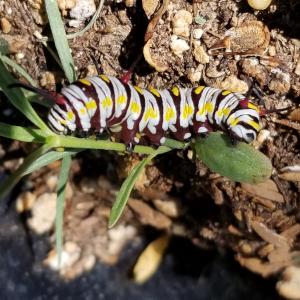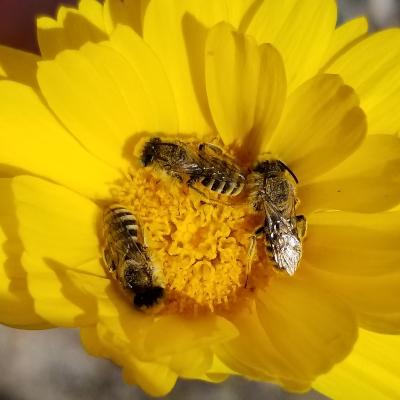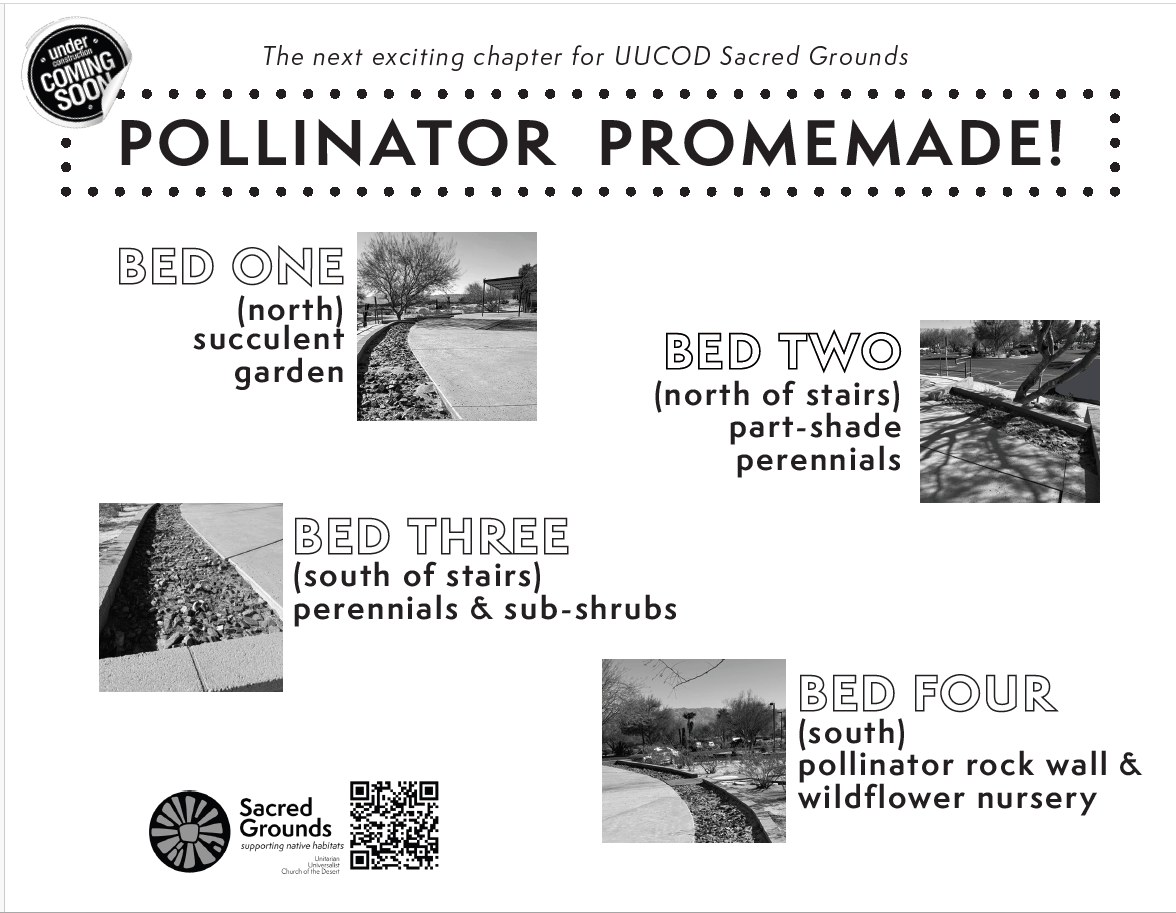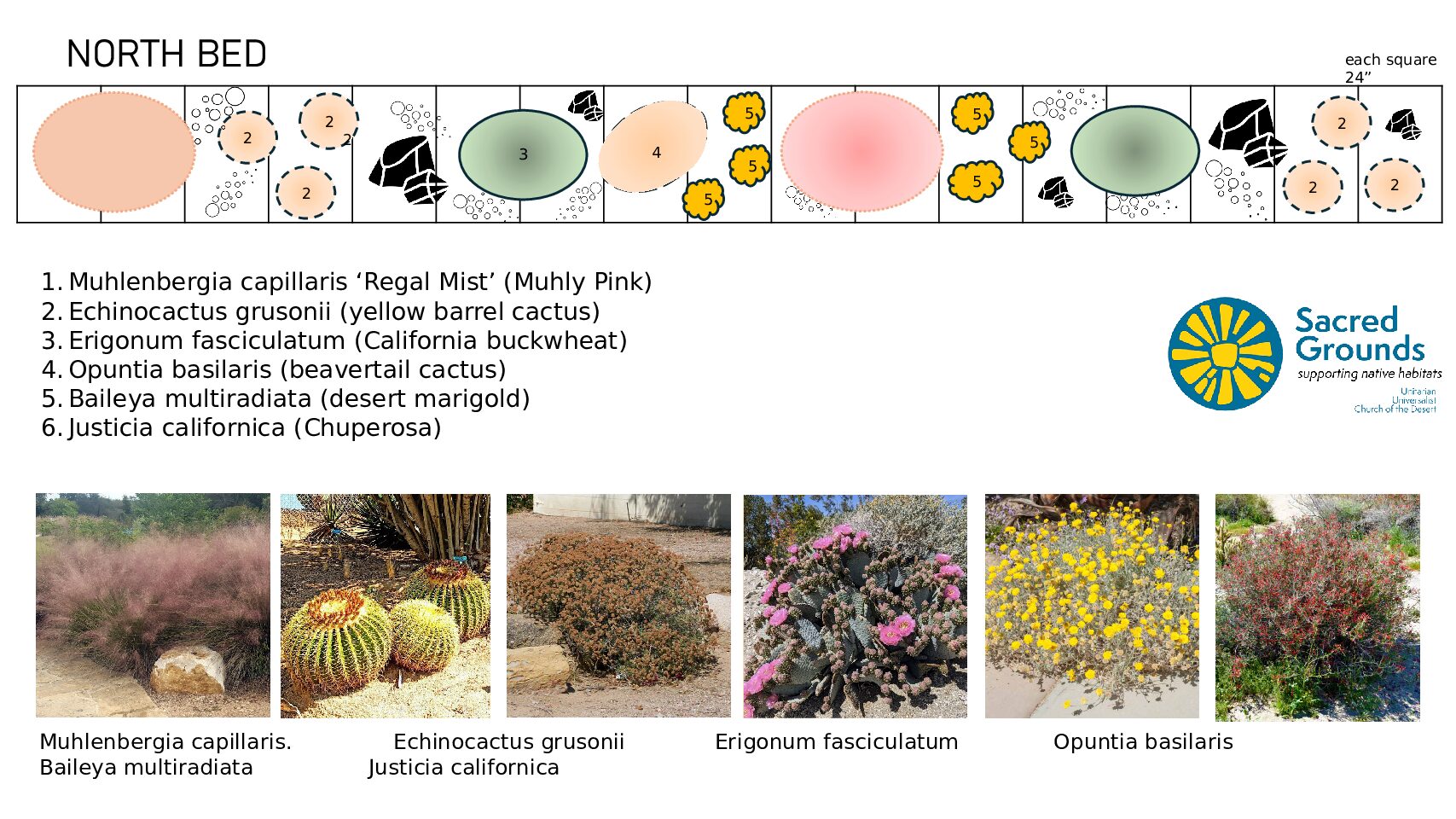Pollinator Promenade

The Pollinator Promenade
We first started helping our pollinators by planting rush milkweed on the grounds in 2019, and we added some landscaping near the church entrance in 2023.
Envisioned as a multi-year effort, the major Pollinator Promenade work started in the Fall of 2024, encompassing the entire area in front of the building and patio.

Sweat Bees
We hope our Pollinator Garden demonstrates a habitat which you can easily replicate in your own landscape to increase reproduction of these valuable species.
When we think of planting a pollinator garden, our minds go to protecting butterflies, especially the diminishing monarch butterfly. There is much more diversity in pollinator types, though. Bees, moths, beetles, flies, hummingbirds and bats also have important roles in desert plant communities. All pollinate desert plants and all are threatened by pesticide drift, climate change and invasive species. Our pollinator garden will provide specific habitat for a vast variety of pollinators to flourish through out the year and throughout their life cycles.
Here are two examples of specific habitat design that we may implement:
There are 750 different species of native bees in our desert region. While gathering nectar, they collect and spread pollen to the flowers they visit. Most of them are solitary bees who build individual nests in soil, wood cavities or rock crevices. Our habitat should include features that allow native bees to flourish.
Moths and butterflies visit flowers to collect nectar and their caterpillars eat leaves of a single plant species. Our habitat should include plants which support moths and butterflies throughout their life cycle.
Planting starts now!
We have developed the plant lists and drawn up the plans. We’ve prepared most of teh beds, clearing out a prior rock garden, and are adding irrigation.
The project is being developed in coordination with the University of California Riverside Climate Stewards, the Rotary International’s Operation Pollination, and Pollinator.org’s Bee Friendly Gardening.

